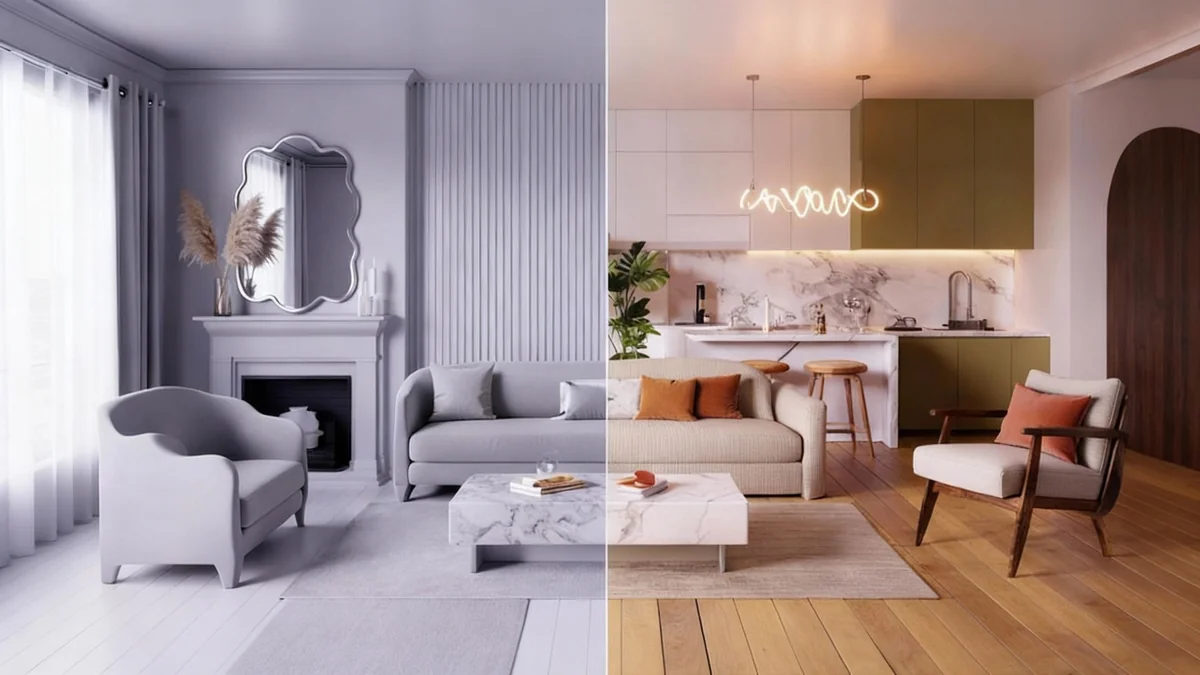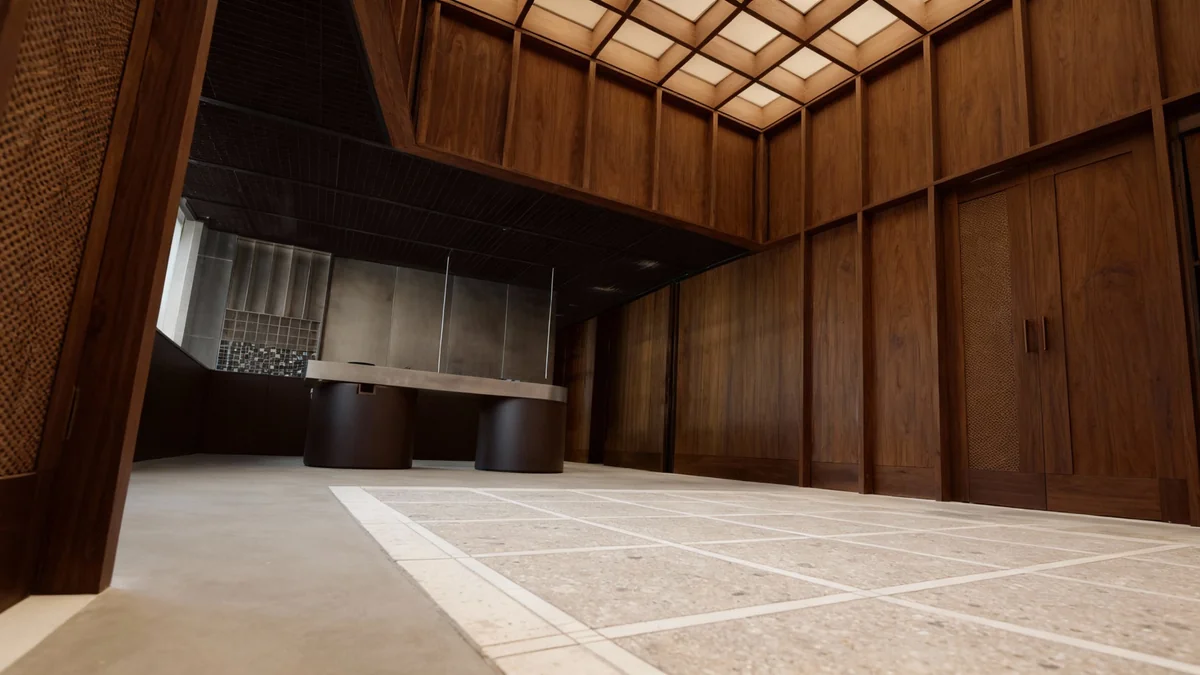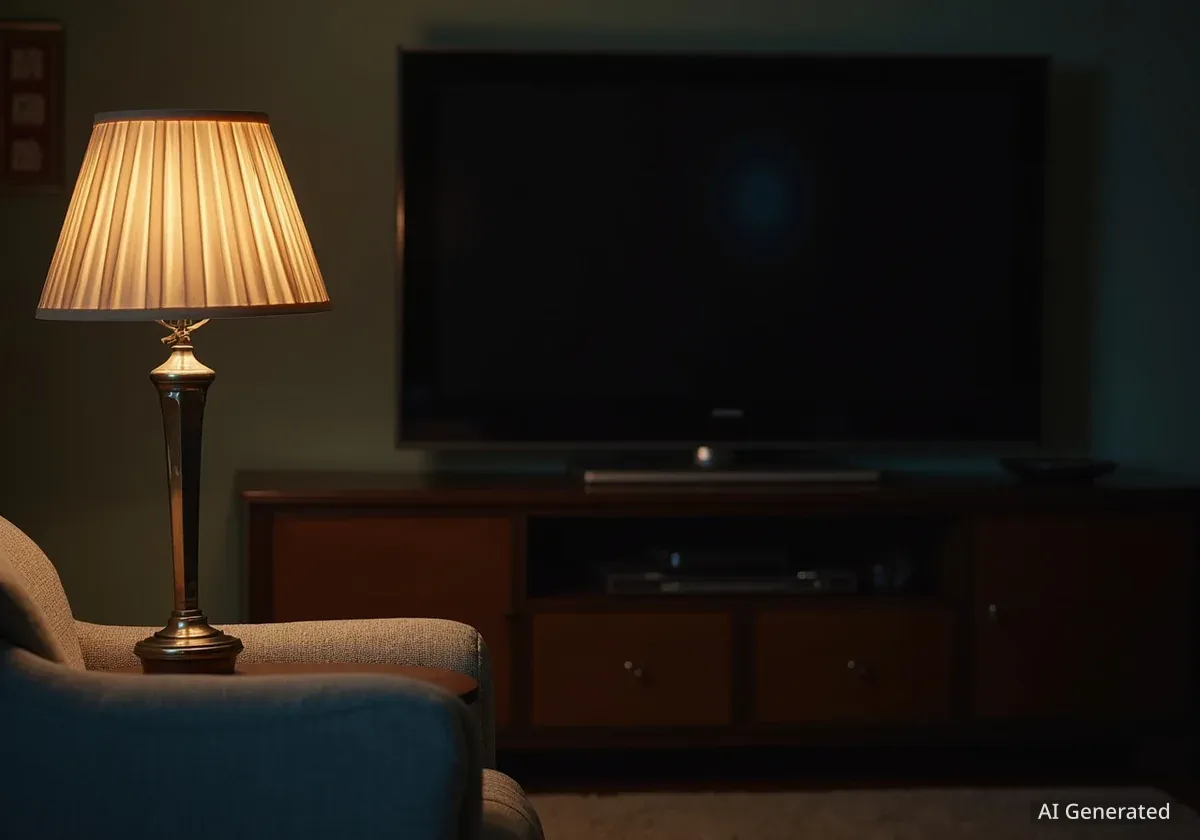In the ever-evolving world of interior design, certain trends gain immense popularity only to quickly fade, leaving homes feeling dated. As we approach 2025, it is becoming clear which design choices might not stand the test of time. Homeowners and designers are now focusing on creating spaces that offer lasting appeal rather than chasing fleeting fads.
This shift emphasizes thoughtful selections over rapid adoption of popular aesthetics. The goal is to build environments that reflect personal style and comfort, enduring through changing seasons and years.
Key Takeaways
- Avoid hyper-specific trends like 'curvy everything' and excessive slat panelling.
- Prioritize natural, durable materials that age gracefully over faux alternatives.
- Develop a simple, quiet color palette based on personal preference.
- Implement layered lighting for functionality and ambiance.
- Mix new pieces with vintage items to create a unique, curated look.
- Focus on quality over quantity, investing in foundational pieces.
The Pitfalls of Fast Trends
Many design trends seen on social media are designed for visual impact in a quick scroll, not for long-term living. These trends often rely on instantly recognizable shapes or textures that can quickly become tiresome. For example, the widespread use of exaggerated curves in furniture, from headboards to kitchen islands, quickly dates a room.
Similarly, overzealous slat panelling, which can make a space resemble a commercial spa, loses its novelty fast. Laminates mimicking marble with overly dramatic veining also fall into this category. These signatures become easily identifiable and timestamp a room to a specific period.
Did You Know?
Estate agents in London report that all-grey flats tend to linger on the market, while rooms with character and good lighting sell faster. This suggests buyers seek authenticity over generic trends.
A landlord in Walthamstow experienced this firsthand. His 2021 'Instagram kitchen,' complete with black taps, faux terrazzo, and a neon sign, attracted initial interest online. However, in-person viewings often resulted in yawns, with potential buyers questioning the room's feel during a cold February morning, not just how it photographed at sunset.
Why Trends Age Quickly
Trends often act as shorthand, flattening the unique context of a home. Real rooms have inherent characteristics: ceiling height, natural light, the placement of radiators, and awkward corners. When a trend ignores these fundamental elements, it can clash with the house's natural structure.
Materials also play a crucial role in how quickly a design ages. Plastic attempting to mimic stone, wood that feels flimsy, and paints that diminish natural light can all contribute to a room looking outdated within months, rather than years. The issue is not with trends themselves, but with thoughtless copying.
"Trends aren’t the enemy; thoughtless copying is," states a design expert. "A room should tell your story, not the internet's."
Building a Timeless Foundation
To create a home that feels chic and enduring, start with a simple, quiet color palette. This palette should resonate with your personal style, perhaps even mirroring colors you enjoy wearing. Select one grounding neutral, one cozy mid-tone, and one accent color that truly excites you.
Testing Your Palette
It is important to test these three colors on large A3 sheets in various lighting conditions: morning, noon, and lamplight. Place them near skirting boards and in corners to see how they interact with the room's existing elements and light.
Next, consider your materials carefully, much like building a wardrobe. Opt for real timber that can be refinished, natural stone that is properly sealed, and high-quality wool and cotton fabrics that develop a beautiful patina over time. Allow one key finish to be the focal point, while other elements serve as supporting details.
The Power of Thoughtful Editing
Rooms feel more inviting when they are not cluttered. Practicing thoughtful editing is key. Lighting is another transformative element. Plan for three layers of light: overhead for general tasks, task lighting for specific activities like reading or cooking, and ambient lighting for creating a relaxed evening atmosphere. Install dimmers where possible.
Warm light bulbs, around 2700K, enhance paint colors and make a space feel cozier, especially during shorter, darker winter days. Instead of matching everything perfectly, focus on layering different textures and styles. Combine a small antique piece with a clean-lined sofa, or pair linen with lacquer for contrast. If you desire a curvy element, choose one and subtly echo its shape in a lamp or door handle.
- Start with three anchored colors: One neutral, one mid-tone, one accent.
- Prioritize honest materials: Real timber, stone, wool for longevity.
- Edit trends to accents: Integrate trends sparingly, not as a dominant theme.
Making Intentional Choices
Pattern can look chic when it shares a color thread with a solid element across the room, creating visual harmony. While impulse buys happen, creating a 'holding zone' for potential purchases allows you to live with them for a while before committing. Returning items you don't love is a valid design tool.
When you do buy, invest in better quality pieces. Your home should reflect your journey, not a showroom display. A solid dining table, for instance, can outlast several trend cycles and become a central piece for countless family gatherings. If budget is a concern, prioritize elevating hardware, fabrics, and light switches, as these small touches have a significant impact on the tactile experience of a home.
"Choose fewer things, more carefully — then let the room exhale," a designer's mantra suggests.
Keep walls calm and introduce color through art and textiles, which are easy to change. Avoid matching furniture sets; instead, assemble pieces that share a common tone or material. Incorporate at least one vintage item per room to break up a catalog look. Use real books, plants, and baskets, and avoid artificial clutter. Plan storage solutions early to keep surfaces clear and maintain a serene environment.
A Mindset for Lasting Design
Approach design with a seasonal perspective. Consider how a room will feel in bright June versus drizzly March. Timeless design accommodates both. It is often less about what you add and more about what you bravely choose to keep out. When you edit thoughtfully, the pieces you retain gain strength and significance. The room begins to tell your unique story.
Engage with your home's inherent character. A Victorian terrace, for example, might benefit from aligned skirting boards, weighty door knobs, and colors that respect its shadows. A new-build home might thrive with added texture, warmth, and carefully placed curves, rather than attempting to replicate period charm.
Ultimately, the philosophy for 2025 and beyond is to buy less, but better, and allow your rooms to breathe. Share your design experiments with trusted friends or neighbors. Their fresh perspectives can offer valuable insights before you make big changes. The most elegant homes are often those shaped by honest eyes and a patient approach.
Frequently Asked Questions
- Which colors date a room fastest? High-chroma 'it' shades tied to a specific moment can quickly look outdated. Earthy greens, soft blues, and complex neutrals tend to have more longevity.
- Is boucle 'over' in 2025? In large, whole-room applications, yes. However, as a single textured ottoman or cushion, it can still be a lovely accent. Proportion is key.
- Are gallery walls out? Grids of cheap prints can feel tired. Mixed frames with genuine art, personal photos, and sufficient breathing space still look considered and elegant.
- What's the quickest chic update? Swapping light bulbs to warm, dimmable ones, changing tired handles to solid metal, or adding one large, impactful lamp can significantly uplift a room.
- How do I avoid a trendy kitchen trap? Keep cabinetry classic, select durable worktops, and inject personality through easily changeable elements like stools, lighting, and art.




